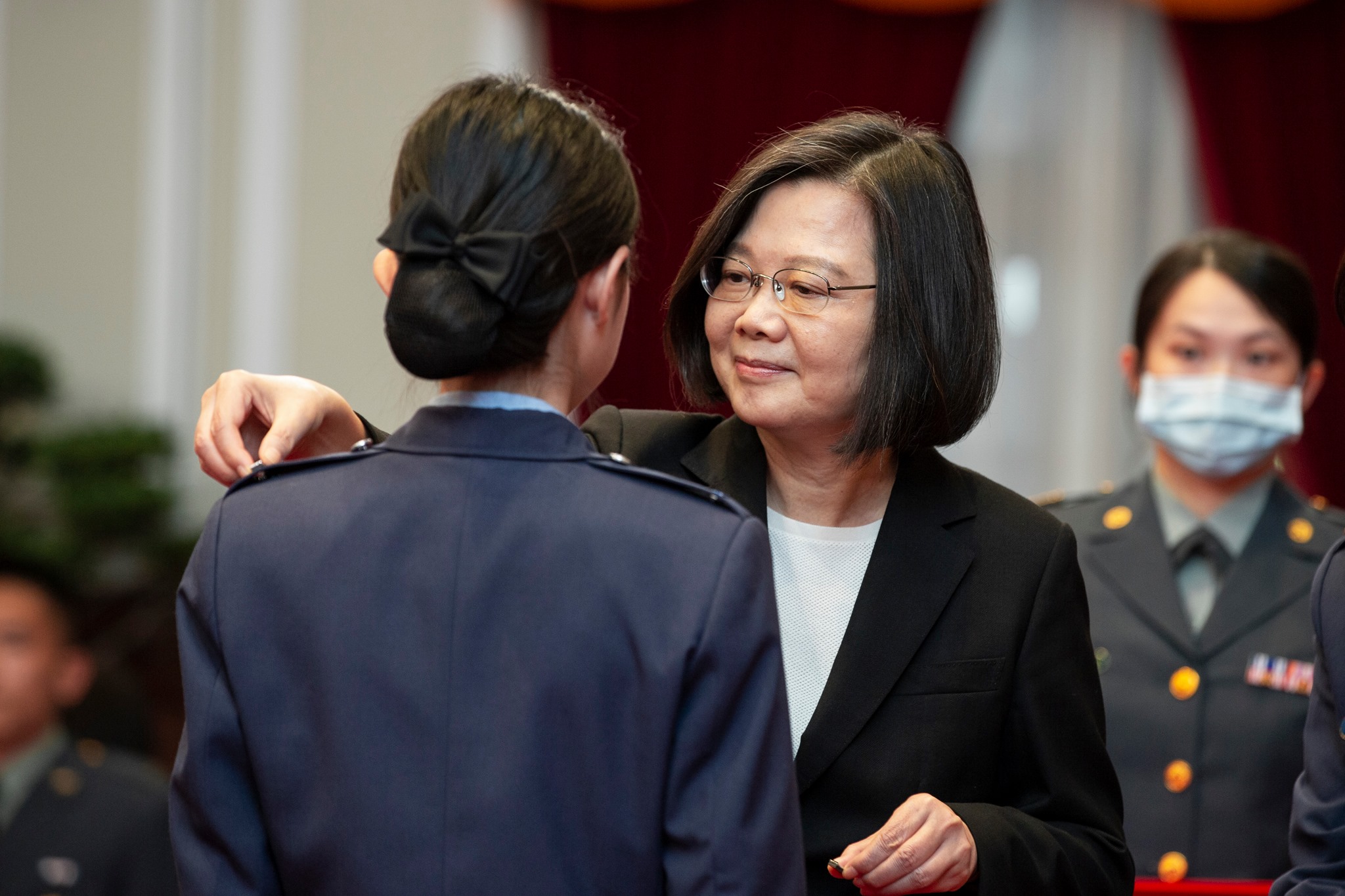Beijing seeks to isolate Taiwan and condition its people and the international community to accept a ‘new normal.’ It also seeks to widen differences not only between the ‘blue’ and ‘green’ camps in Taiwan politics, but also between the ‘mainstream’ and ‘radical’ greens and thus spark a dangerous vicious circle.
Beijing has precious few partners left back in Taiwan to help it engineer the “peaceful” unification that is at the core of Chinese leader Xi Jinping’s “great rejuvenation” ambitions. In fact, trends over the years and Beijing’s inability to come up with a formula that can have a modicum of appeal among the Taiwanese have put the lie to the notion that unification can occur without a largely coercive component.
Forget the Taiwan Affairs Office’s “31 incentives” unveiled earlier this year, or the trickle of delegations by marginal members of the “blue” and “red” camps to Beijing, or the United Front forums organized here and there to cultivate a pro-Beijing youth among the Taiwanese. None of those measures will succeed in generating enough momentum to shift overall perceptions of China in Taiwan.
The reason for this is largely due to the fact that the Chinese Communist Party (CCP), as I have argued before, still does not have a strategy on how to win the hearts and minds of the Taiwanese. Other than its stubborn attachment to notions of “economic determinism” — the (discredited) idea that people will willingly change their identity and ideology if you throw enough money at them — Beijing has been incapable of breaking through the bonds that unite the majority of people in Taiwan, “green” and “blue.” Watch how members of the “blue” camp in Taiwan and waishengren interact with their Chinese counterparts in various settings (e.g., conferences) and it immediately becomes evident that the two sides, notwithstanding their supposed affinities, live in two different worlds (I have also long argued that the “green” and “blue” camps in Taiwan have much more in common than many of them will allow, and that acknowledging and reinforcing those bonds, that “Taiwan consensus,” would be a key step in creating the kind of united front that is necessary to counter the China threat).
The divide is now such that the annual Kuomintang (KMT)-Chinese Communist Party (CCP) dialogue appears to have been cancelled, and Beijing seems unwilling to reach out to the current KMT chairman, Wu Den-yih, who is probably too Taiwanese for their liking (there is chatter at the moment that the “mainlander” camp within the KMT is effectively trying to sideline Wu). And earlier this year, an influential Chinese commentator lamented the fact that the KMT no longer seemed interested in unification. Yes, the CCP will find members of the blue camp who will seemingly collaborate with it to hurt Taiwan (the incident over the East Asian Youth Games in Taichung in 2019 and remarks by some KMT elders about this certainly comes to mind) but in those cases this is more an example of politicians putting their own ambitions ahead of the nation’s welfare than a concrete subjugation to Beijing, or support for Beijing’s ultimate aims for Taiwan.
Break and divide strategy
Unable to break Taiwan’s “firewall” and the attachment to liberal-democracy that unites its people, Beijing has instead embarked on a campaign, waged on multiple fronts, to break the will of the Taiwanese. In the past two years, this has meant luring Taiwan’s official diplomatic allies, blocking Taiwan’s participation in multilateral organizations, preventing the use of official designations and the presence of the Republic of China (ROC) flag worldwide, pressuring universities to cancel Taiwan cultural events (as occurred in Spain earlier this year), and pressuring private international firms, hotel chains and airlines among them, to remove any and all references suggesting statehood for Taiwan — demands that, very sadly, almost every company has yielded to, often with little support or guidance from governments which choose to regard this as the sole responsibility of the private firms involved to deal with.
That “great squeeze” has several objectives. It is (a) meant to isolate Taiwan; and (b) to condition the Taiwanese, as well as the international community, into “accepting” this new reality (note that with every new incident reactions become less and less vocal).
There is a third component to all this, which is to (c) exacerbate dissatisfaction within the two main political camps in Taiwan. Dissatisfaction within (i) the “blue” camp, which will attribute all those misfortunes to President Tsai Ing-wen’s refusal to recognize the “1992 consensus” construct and the “one China” framework, where room for “different interpretations” has narrowed under Xi, that comes with it. Hence comments like those made by former Taichung mayor Jason Hu yesterday regarding the controversy over the Taichung games to the effect that the Tsai administration “only has itself to blame” for the likelihood that the games will be cancelled (Hu now works for the pro-Beijing Want China Times Group). And dissatisfaction within (ii) the (deep) “green” camp, which has increasingly blamed President Tsai for her purported “failure” to stand up to China’s aggression. Dissatisfaction within the latter group has both created a split between the mainstream “greens” (the people in the Tsai administration), and the “deep greens,” who are now escalating their demands for referenda on a variety of things, from a ban on the display of People’s Republic of China (PRC) flags to the name under which the Taiwanese team should participate in the Tokyo Olympic Games to the ultimate one — a referendum on whether to use Taiwan as the official name of the country.
All of these, which have served as rallying points for various groups within the “deep green” camp who have openly resented President Tsai from day one, have in turn created more pretexts for Beijing to clamp down on Taiwan (officially Beijing makes no distinction between the moderate “greens” in the Tsai administration and the more radical “deep greens” who are calling on her to be firmer with China). The more Beijing clamps down, the more animated the “deep greens” become, creating a dangerous vicious circle on the “green” side of Taiwanese politics. And the more vocal and influential the “deep greens” seem to become (notwithstanding ongoing efforts by the Tsai government to mitigate their influence), the more likely it is that the longstanding blue-green divide will widen (thus far President Tsai has successfully reached out to the moderate blues in Taiwan).
President Tsai consequently faces a squeeze from both ends of the political spectrum, and much of this is being engineered by Beijing, which has also capitalized on other issues, pension reform and the attendant discontent among some groups of retired civil servants, among them. Beijing has long said it wants to ensure that President Tsai will be a one-term president. Its intensifying squeeze is part of that strategy, whose chances of success are, to a large extent, contingent on the two main political camps in Taiwan amplifying its effects. If, as I hope, the two sides recognize that this is what Beijing is up to, and come together rather than exacerbate their differences, then there is a good likelihood that Beijing’s latest effort will also fail. If, instead, they fall into that trap, the ensuing vicious circle could have devastating repercussions for Taiwan.
Top photo: Tsai Ing-wen official Facebook page.
You might also like
More from Cross-Strait
Beijing Was Cooking the Frog in Hong Kong Well Before the National Security Law
Well before the coming into force of the NSL on July 1, the special administrative region had already become a …
President Tsai’s Second Term and Cross-Strait Relations: What to Watch Out For
The next four years will be marked by uncertainty over China’s trajectory and the state of the world in the …
As Coronavirus Crisis Intensifies, Beijing Continues to Play Politics Over Taiwan
With a major epidemic on its hands, the Chinese government has not ceased its political warfare activities against Taiwan. It …









